When it comes to traveling in the mountainous regions of Northern Vietnam, tourists immediately think of places with majestic and pristine natural landscapes. However, few know that for the past 100 years, there has been an ancient stone path covered in moss, as if it stepped out of a movie or a fairy tale. This is the path that travelers can choose for their trekking journey.
This path is located in Lai Châu Province and is the route that local ethnic people choose to travel from Nhìu Cồ San village to Sàng Mà Pho village and vice versa. Its name is Pavi Stone Path.
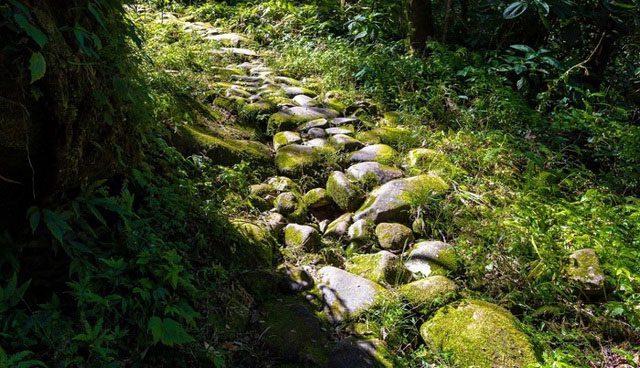
The ancient stone path covered in moss, winding through the old forest named Pavi. (Photo by Vietnam Travel).
Historical Imprints of the Pavi Stone Path
According to information from the Electronic Information Portal of Lào Cai Province, the path is named after the French governor Auguste Jean-Marie Pavie, who constructed the road in 1920 and completed it seven years later. The entire project was built manually using large stones and pebbles, with a total length of up to 80km. The width of the path is not large, with the widest section measuring just over 3 meters.
The Pavi Path winds through pristine forests, cardamom woods, and the towering mountain ranges of the Northwest region. However, the path is not difficult to traverse. The purpose of building this forest path was to transport goods by people, horses, buffaloes, and cows between Lào Cai and Lai Châu provinces. For this reason, the stones used for the path were smoothed to facilitate travel.
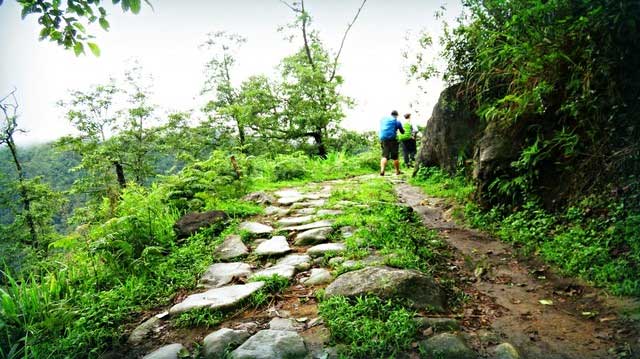
The path was built over 100 years ago for the purpose of transportation and trade between localities. (Photo by Vietnam Adventure Travel).
Over a long period marked by ups and downs, the Pavi Path now remains only about 14km. The stone surface is still there but has been partially covered by a layer of moss. The people in Sàng Ma Sáo and Sàng Mà Pho villages of Lào Cai and Lai Châu provinces still use this path.
Due to its historical value, in 2019, the People’s Committee of Bát Xát District (Lào Cai) and the People’s Committee of Phong Thổ District (Lai Châu) conducted surveys to connect and develop tourism for the Pavi Stone Path. The results showed that the ancient stone path has helped enhance the tourism potential of both communes and districts, as well as preserve the cultural and historical values of the ancient stone path.
The Journey to Conquer the “Fairy Tale Path”
Many tourists comment that compared to many other destinations in Lai Châu, the beauty of Pavi Stone Path is truly unique. You must set foot there to truly feel it. As mentioned above, in addition to being used as a route from Nhìu Cồ San village to Sàng Mà Pho village, the ancient Pavi Path is also a convenient trekking route for tourists. Most commonly, tourists choose to trek the Pavi Path to reach Gió Pass.
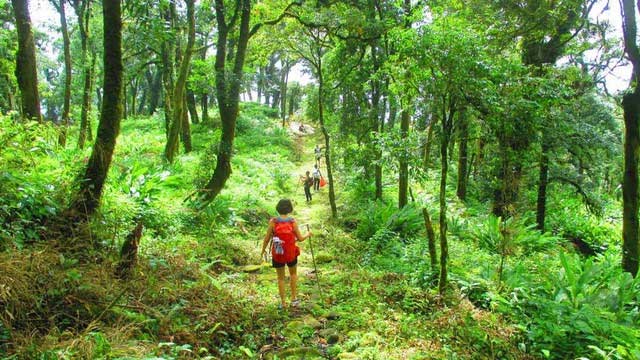
The ancient Pavi Stone Path is now a favorite trekking route for many adventurers, especially beginners. (Photo by Traveloka).
Adventurer Quang Khải (from Hanoi) remarked: “Compared to trekking through the forest on mountains like Bạch Mộc Lương Tử or Tà Chì Nhù, the journey along the Pavi Path is somewhat ‘easier’ because this is a path frequented by many, with a fairly open space.“
Mr. Lý A Sáng – Director of Lý A Sáng Trading and Tourism Company revealed: “After many surveys, I chose the trekking route for my tourists starting from Sàng Mà Pho village to Nhìu Cồ San village. Tourists traveling from Lai Châu to Lào Cai via the ancient Pavi Stone Path won’t have to climb steep slopes, making it less strenuous compared to the opposite journey.”
According to Quang Khải’s experience, it’s best to choose a trekking time around 7-8 AM to have enough time for lunch and rest at the top of Gió Pass. For convenience, you can contact a travel company beforehand to have porters accompany you on the trip, ensuring maximum safety.
As you venture deeper into the forest, the beauty of the ancient Pavi Stone Path becomes increasingly enchanting and mystical. Tourists will walk on a stone path covered in lush green moss, with some sections that can be quite slippery, requiring trekkers to have walking sticks for support.
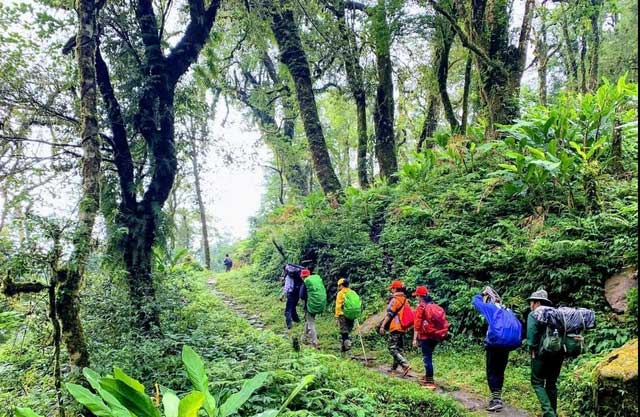
The Pavi Path facilitates easier and more convenient trekking through the forest. (Photo by Lai Châu Electronic Information Portal).
The most captivating aspect of trekking the ancient Pavi Stone Path is crossing a pristine forest with diverse biodiversity. The forest is layered with cardamom growth, mixed low-level plants, and higher layers of coniferous trees, maple trees, and large hardwood trees above. When sunlight filters through the layers of vegetation, casting down onto the foliage, the entire forest seems to brighten up, becoming incredibly poetic.
It takes about 3-4 hours for tourists to reach Gió Pass. At an elevation of over 2000 meters above sea level, thick fog will appear here even when it’s sunny. Tourists should be mindful to wear jackets and move carefully.
Ms. Thanh Hương, a tourist from Hanoi shared: “I feel like I am lost in a fairy tale forest, truly surprised by that beauty. Sitting down for lunch amidst a pristine forest with the scent of cardamom is an experience that not everyone is fortunate to have. I can hear the sound of the stream flowing, birds singing, the wind rustling, and white clouds drifting across the deep blue sky…. That is a worthy reward after hours of hiking that city life cannot offer.”
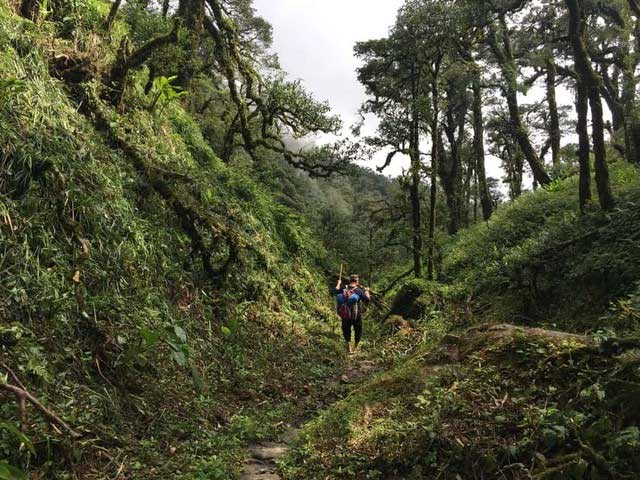
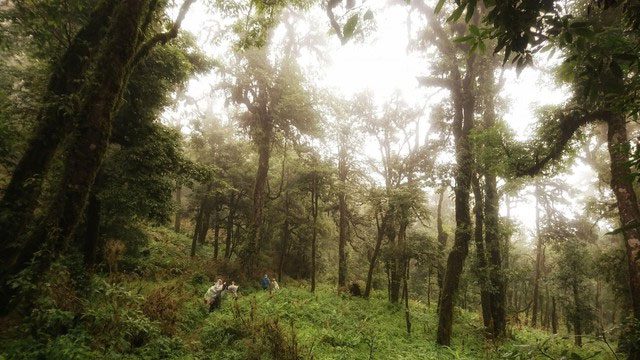
The scenery of the pristine forest throughout the journey reminds many tourists of scenes from fairy tales. (Photo by Traveloka)
Along the way, tourists can also visit the old French airport. This is a vast flatland with lush green grass interspersed with purple mua flowers. After passing the airport, 2km later, you will arrive at Nhìu Cồ San village, concluding the legendary journey of conquering the ancient Pavi Stone Path.


















































